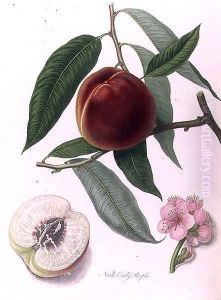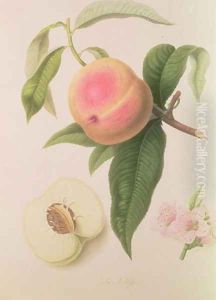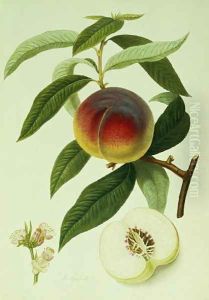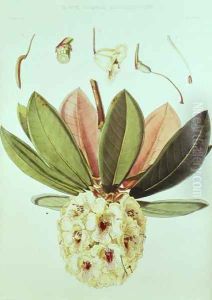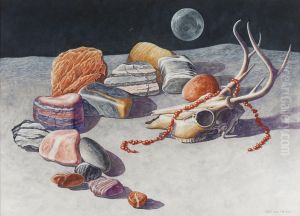William Hooker Paintings
William Jackson Hooker was a prominent British botanist and botanical illustrator, born in Norwich, England, in 1779. Not to be confused with his son, Sir Joseph Dalton Hooker, who was also a famous botanist, William Hooker was a leading figure in the world of botany during the early 19th century. He was particularly renowned for his detailed illustrations and his contributions to the understanding of ferns.
Hooker's interest in botany began in his youth, and his passion for the subject only grew as he aged. He was largely self-taught, which was not uncommon for naturalists during this period. His early work included the study of mosses, liverworts, and ferns. In 1812, Hooker published his first major work, 'British Jungermanniae,' a study of British liverworts, which was well received and established his reputation as a meticulous and skilled botanist.
Over the years, Hooker embarked on various botanical expeditions, including a significant journey to Iceland in 1809. His observations and collections from these trips contributed to his later works. Hooker's illustrations were notable for their accuracy and beauty, and he often collaborated with other botanists, contributing illustrations and research to joint publications.
In 1820, Hooker was appointed Regius Professor of Botany at the University of Glasgow, a prestigious position that allowed him to further his research and teaching career. He was instrumental in expanding the botanic gardens in Glasgow and used them as a resource for teaching and research. During his time in Glasgow, Hooker continued to publish extensively on botany, including works on British flora, garden plants, and exotic plants.
William Hooker's contributions to botany were recognized by his contemporaries, and he was elected as a Fellow of the Royal Society. His legacy includes the foundation he laid for systematic botany in Britain and his influence on future generations of botanists. Hooker passed away in 1832, leaving behind a wealth of botanical knowledge and an enduring impact on the scientific study of plants.
